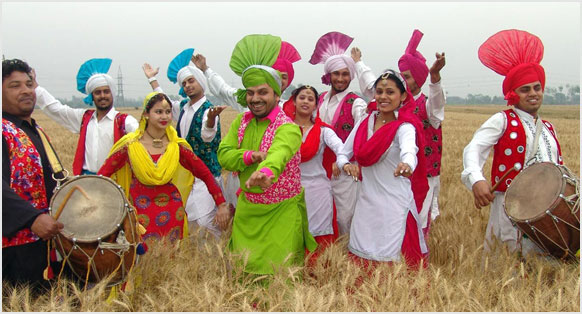
Baisakhi is a derivative of Vaishakha. After harvesting the winter crop, the farmers of the northern states of Punjab and Haryana celebrate the beginning of another year. The day coincides with the solar equinox on the 13th of April. There is boisterous dancing and loud joyous singing as the traditional folk dances of Punjab, called the Gidda and Bhangra, are performed. It is also the anniversary of the creation of the Khalsa Pantha. People collect in the evening around abonfire to celebrate the harvest. History has recorded the execution of Guru Teg Bahadur, the ninth guru of the Sikhs, by the Mughals, on November 11, 1675. In revolt against this in justice, his son Guru Govind Singh, who was also the tenth guru, was compelled to take up arms.
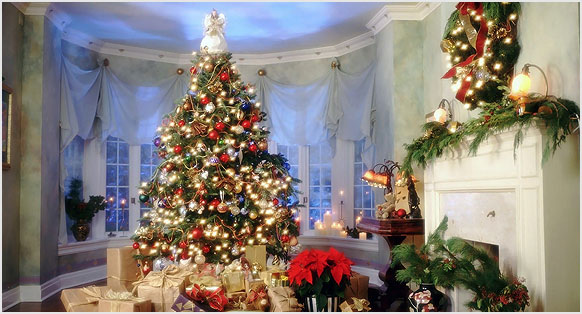
The history of Christmas dates back over 4000 years. Many of our Christmas traditions were celebrated centuries before the Christ child was born. The 12 days of Christmas, the bright fires, the yule log, the giving of gifts, carnivals(parades) with floats, carolers who sing while going from house to house, the holiday feasts, and the church processions can all be traced back to the early Mesopotamians. Many of these traditions began with the Mesopotamian celebration of New Years.
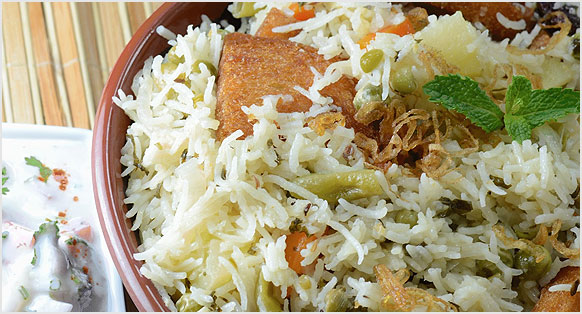
Whenever we think of India we think as a land of festivals. Every festival in India epitomizes the social, cultural and religious aspirations of the people. Every festival brings with it few days of happiness and joy in the life of the people. Navratri, or 'The Festival of Nine Nights', is celebrated during the first nine days of the Hindu month of Ashvin (September-October). The festival is dedicated to the worship of Mother Goddess or Shakti and her nine forms. This season is considered to be an auspicious one as it is generally associated with the sowing of seeds. People sow seeds on the first day, consecrate the planets, watch the sprouting and worship Goddess Durga during this festival. The last three days are especially considered most important.

India is a land of festivals. Diwali, the Festival of Lights, is celebrated with fervor and gaiety. The festival is celebrated by young and old, rich and poor, throughout the country to dispel darkness and light up their lives. The festival symbolizes unity in diversity as every state celebrates it in its own special way. The celebration of the four-day festival commences on Aswayuja Bahula Chaturdasi and concludes on Kartika Shudda Vijiya. The first day of the festival Naraka Chaturdasi marks the vanquishing of the demon Naraka by Lord Krishna and his wife Satyabhama.

About 2200 years ago, Greek kings, who reigned from Damascus, ruled over the land of Judea and the Jews living there. One Greco-Syrian King, Antiochus Epiphanes, forbade the Jewish people from praying to their God, practicing their customs, and studying their Torah. Antiochus forced the Jews to worship the Greek gods. It is said that he placed an idol of the Greek God Zeus on the alter in the Holy Temple of Jerusalem. In response to this persecution, Judah Maccabee and his four brothers organized a group of resistance fighters known as the Maccabees. They fought against paganism and oppression.
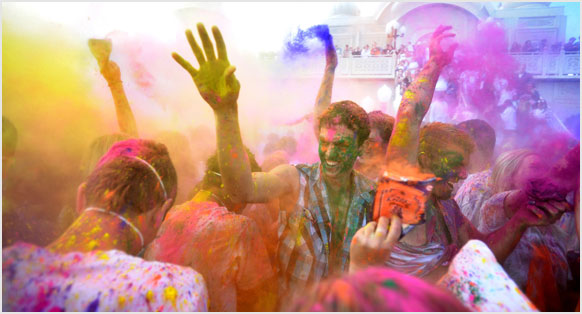
Holi is the most colourful festival of the Hindus and falls on the Full moon day in the month of Phalgun according to the Hindu Calendar which is the month of March as per the Gregorian Calendar. This Holi festival has many elements of primitive and prolific rites and reveries that have defied civilisation and prudery. During the three days of this festival, particularly the whole country, towns, cities and villages - go gay with merry makers, streets, parks and public places are crowded with people, daubed in diverse colours, looking funny and ridiculous. Children and youngsters vie with each other in being original and use fast and sticky colours. It is all a mirthful abandon for them.
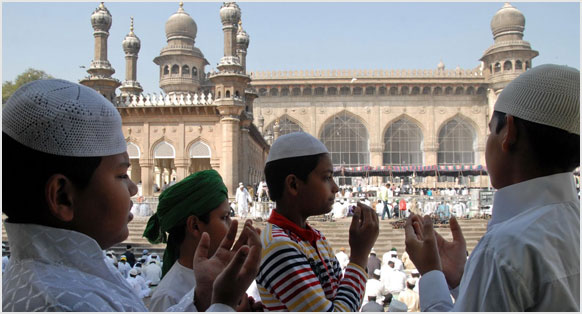
There are various festivals in the Muslim calendar. But Bakriid or Id-ul-Zuha is one of the most celebrated festivals among Muslims all over the world. It is a day of sacrifice for the Muslims. According to legends. It all started with a dream in which Allah directed the patriarch Prophet Ibrahim to sacrifice his son Ismail. It was Ibrahim's faith in Allah and his son's faith in his father that were on test. Before performing the sacrifice Ismail tied a cloth around his father's eyes. But when Ibrahim opened his eyes he found his son safe and sound. In his place lay a dead dumba or ram. It is in honour of this test of faith that Muslims around the world sacrifice an animal on the occasion of Id-ul-azha to show their allegiance, faith and sincerity towards Allah.

Lord Krishna appeared over five thousand years ago in Mathura, India to Devaki and Vasudeva in the jail cell of the tyrant Kamsa. The place of His birth is known as Sri Krishna Janmasthana. He appeared with His brother Balarama in response to the demigods' prayers for protection from the widespread influence of demonic administration on earth. Previously, the demigods and demons had been at war in the heavens. When the demons were defeated by the demigods, they decided to instead attack this planet earth. Thus, they invaded the earth by discretely taking birth as princes in powerful royal families of the time.

Karva Chauth is observed by married women (suhagini) for ensuring wedded bliss and wishing long life for their husbands and children. A married woman who observes this vrat is called ‘Saubhagyavati’ (joyous and happy state of wifehood). On the occasion of this vrat (Fast) a kalash (small container) is filled with either milk or water. In that kalash is placed Pancha Ratna (five pieces of different metals gold, silver, copper, brass and iron). The kalash is then presented to a Brahmin and also exchanged with other married women.

The history of Lohri, a seasonal festival of North India is as old as that of story of Indus Valley civilization itself. The Festival of Lohri marks the beginning of the end of winter and the coming of spring and the new year. The fires lit at night, the hand warming, the song and dance and the coming together of an otherwise atomized community, are only some of the features of this festival.The Lohri of north India coincides with Pongal in Tamil Nadu, Makar Sankranti in Bengal, Magha Bihu in Assam, Tai Pongal in Kerala, all celebrated on the auspicious day of Makar Sankranti.

High-spirited people of Kerala celebrate Onam with gaiety and fervor. The festival is celebrated for a period of ten days, starting from the first day Atham and continuing till tenth and the biggest day called Thiru Onam. The spectacular festival attracts thousands of tourists from across the country and globe. Immense popularity of the festival is further promoted by the Government of India by celebrating Kerala Tourism Week during the time of Onam.

The history of Pongal can be traced back to the Sangam Age, ie, 200 B.C. to 300 A.D. Pongal is an ancient festival of the Tamils and it is not known when exactly the Tamils began celebrating the festival, but some historians identify it with the Thai Un and Thai Niradal, believed to have been celebrated during the Sangam Age. Pongal, a traditional Tamilian food item that has found a place in the menu of Indian restaurants across the world, is perhaps the only dish to have lent its name.
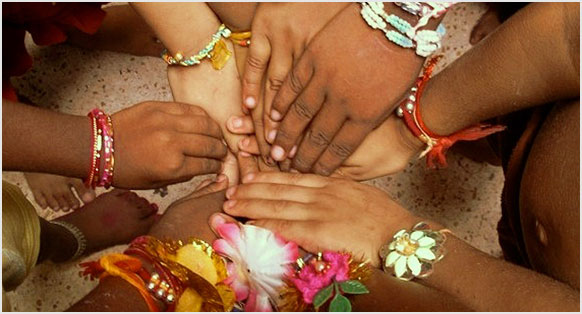
In every sense Raksha Bandhan is a true Indian festival. Rakhi is all about human emotions it's a celebration of love and care among siblings. It portrays the true picture of our rich cultural heritage and traditions. With the passage of time it is the celebration styles and perspective that has become contemporary but the customs, traditions and rituals is the same till date. Still today also the rituals are followed with the same respect and enthusiasm. Through out the country the festival is known as Rakhi or Raksha Bandhan but owing to its varied legends and significance RakshaBandhan is known by different names in different states of India, by different communities.

All praises to Allah, Lord of the worlds. He who revealed in His Glorious Qur'an, "Oh you who believe, fasting is prescribed for you as it was prescribed for those who came before you that you may keep your duty to your Lord (having taqwa)," 2:185. And may blessings and peace of Allah be upon His last Messenger Muhammad ibn Abdullah, forever. Oh you who believe, Ramadan is a sacred month wherein Almighty Allah is constantly testing His creation and giving humanity the opportunity to achieve infinite, endless Bliss. Fasting is a complete purification and a means to developing the consciousness of Allah's presence.

Makar Sankranti is one of the most auspicious day for the Hindus, and is celebrated in almost all parts of the country in myriad cultural forms, with great devotion, fervor & gaiety. Lakhs of people take a dip in places like Ganga Sagar & Prayag and pray to Lord Sun. It is celebrated with pomp in southern parts of the country as Pongal, and in Punjab is celebrated as Lohri & Maghi. Gujarati's not only look reverentially up to the sun, but also offer thousands of their colorful oblations in the form of beautiful kites all over the skyline. They may be trying to reach upto their glorious God or bring about greater proximity with the one who represents the best. It is a day for which Bhishma Pitamah kept waiting to leave his mortal coil.

One day Parvathi, wife of Lord Siva made a boy with turmeric & breathed life into it. She then asked the boy to guard the door till she took her bath. The boy was instructed not to allow any one to enter. When Siva came and tried to open the door, the boy objected to it. In a fit of anger Siva severed the boy’s head with his Trishul. When Parvathi came to know what had happened to the boy she began to weep. Seeing this, Siva’s heart melted and he promised to put back life into the boy. After a massive search Siva’s disciples could find the head of an elephant to fix on the boy’s body. From then on he was called Gajanan, the elephant-headed boy. From this day is celebrated as birth of Lord Ganesha. The idol of the Lord is worshipped for 10 days and on the eleventh day it is immersed in river or sea amidst a huge procession.
 Easy recipes
Easy recipes
 Healthy Recipes
Healthy Recipes
 Dessert Recipes
Dessert Recipes
 Mutton and Lamb
Mutton and Lamb  Indian Bread Recipes
Indian Bread Recipes
 Dal Recipes
Dal Recipes
 Chutney and Pickles
Chutney and Pickles  Indo-Chinese Recipes
Indo-Chinese Recipes
 Snacks and Appetizers
Snacks and Appetizers
 Low Fat Recipes
Low Fat Recipes
 Chaat Recipes
Chaat Recipes
 Biryani and Rice
Biryani and Rice  Curry Recipes
Curry Recipes
 Indian Sweet Recipes
Indian Sweet Recipes
 Egg Recipes
Egg Recipes
 Paneer Recipes
Paneer Recipes
 Chicken Recipes
Chicken Recipes
 Indian tiffins
Indian tiffins
 Egg less Recipes
Egg less Recipes
 Soups and Salads
Soups and Salads
 Indian Sea Food
Indian Sea Food
 Manchurian Recipes
Manchurian Recipes
 Indian Drinks Recipes
Indian Drinks Recipes
 Dinner Recipes
Dinner Recipes